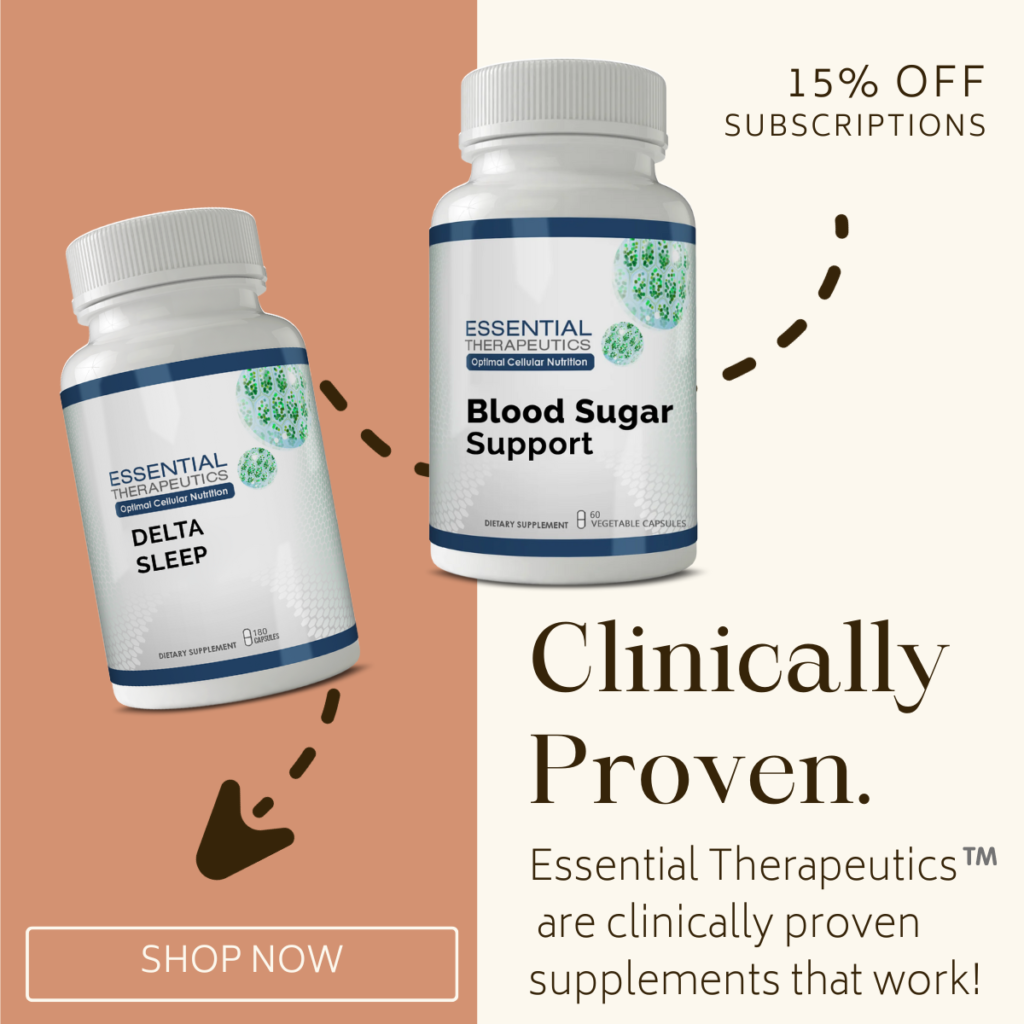
Curcumin Is Effective For Pain Control Without The Side Effects
Researchers from Nirmala Medical Centre in Kerala, India, reported in the journal Phytotherapy Research, that curcumin is a potent pain blocking substance. Curcumin is the principal curcuminoid of the popular Indian spice turmeric, which is a member of the ginger family. The bright yellow color of turmeric comes mainly from fat-soluble, polyphenolic pigments known as curcuminoids. Curcumin, the principal curcuminoid found in turmeric, is generally considered its most active constituent.
In addition to its use as a spice, turmeric has been used in India for medicinal purposes for centuries.
Researchers from the Nirmala Centre found that it works better than the prescription drug, diclofenac sodium, also known as Voltaren, at relieving pain in patients with rheumatoid arthritis.
Nonsteroidal anti-inflammatory drugs have a FDA “block box” warning on their label which state:
NSAIDs may cause an increased risk of serious cardiovascular thrombotic events, myocardial infarction, and stroke, which can be fatal. This risk may increase with duration of use. Patients with cardiovascular disease or risk factors for cardiovascular disease may be at greater risk.
You might have heard of how drug company Merck pulled its NSAID Vioxx off the market years ago. They were responding to the results of a long-term (18-month) clinical trial that revealed that some patients developed serious heart problems while taking the drug. The data that ultimately persuaded the company to withdraw the drug indicated 15 cases of heart attack, stroke, or blood clots per thousand people each year over three years, compared with 7.5 such events per thousand patients taking a placebo.
One of the FDA’s own scientists, Dr. David Graham, estimated that Vioxx has been associated with more than 27,000 heart attacks or deaths linked to cardiac problems. There is disagreement within the FDA over these findings, but they are still staggering to consider.
Fortunately, not only is curcumin as effective as prescription NSAIDS, but, unlike diclofenac sodium or other NSAIDS, curcumin does not cause any harmful side effects.
WebMD reports, “Curcumin may help to reduce inflammation.” Several studies suggest that it might ease symptoms of osteoarthritis and rheumatoid arthritis, like pain and inflammation. Other compounds in turmeric might also be medicinal.
In lab tests, curcumin seems to block the growth of certain kinds of tumors. One study showed that turmeric extract containing curcumin could — in some cases — stabilize colorectal cancer that wasn’t helped by other treatments. But more research is needed.”
Other preliminary lab studies suggest that curcumin or turmeric might protect against types of skin diseases, Alzheimer’s disease, colitis, stomach ulcers, and high cholesterol. Based on lab studies, turmeric and curcumin might also help treat upset stomach, scabies, diabetes, HIV, uveitis, and viral infections.

Curcumin helps relieve achy joint pains by inhibiting or reducing the level of an enzyme known as COX-2. It can also reduce the inflammation by stimulating the adrenal glands so that they can release cortisone, a natural anti-inflammatory hormone.
Research continues to show that curcumin is an effective and safe pain killer compared to pharmaceutical NSAIDs. It can be used to aid in other types of inflammations such as tendinitis, bunions, carpal tunnel syndrome, bursitis, inflammation of the tongue, gout and many other type of bone conditions.
Multiple studies over the years have confirmed the anti-inflammatory efficacy of curcumin, and more recent inquiry has identified RA and its associated symptoms as a major target for curcumin therapy. A 2008 review published in the journal Molecular Nutrition & Food Research, for instance, found that curcumin is capable of reducing all the inflammation-promoting targets in the body, while prescription drugs are generally single-targeted.
Cardiovascular Benefits
It maintains a healthy heart due to its anti-inflammatory and antioxidant properties. The build-up of plaque in the arteries that lead to atherosclerosis was found to be drastically reduced with the use of curcumin in some clinical trials. It also aids in preventing blood clots by thinning blood thus reducing the chances of having a heart attack, stroke, thrombosis or any other cardiovascular diseases.
Curcumin For Cancer
Curcumin extract could be beneficial in many kinds of cancer such as breast cancer, colon cancer, skin cancer as well as prostate cancer. It reduces the risk of developing these cancers in people who frequently uses this extract. The antioxidants found in this extract have the potential to counteract and neutralize free radicals found in the body.
Curcumin extract stops cancer cells from spreading to other parts of the body such breast cancer cells spreading to the lungs by ensuring the dangerous cells do not grow. Curcumin is also said to prevent the growth of new blood vessels in tumors. This process is known as angiogenesis. Angiogenesis is a very critical step in the growth of cancer. More research is needed but it what does exist appears to be promising.
“Every time you eat or drink, you are either feeding disease, or fighting it.”

Green Tea Health Benefits
According to 12 new studies published in the December issue of the American Journal of Clinical Nutrition, consuming tea on a daily basis can boost weight loss, bone health, concentration, problem-solving skills, even your mood.
The research found that sipping two to three cups over a 90-minute period improves alertness, attention span, and focus, helping people produce more accurate work. “One possible reason is that the combination of an amino acid called L-theanine and caffeine stimulates the production of alpha brain waves, giving drinkers a shot of energy, without that jittery feeling,” says Julie Upton MS, RD, CSSD, a registered dietitian.
L-theanine helps produce the feel-good neurotransmitters dopamine, gamma-aminobutyric acid (GABA) and serotonin. L-theanine is very calming to the mind and body. It stimulates alpha brain waves, the same as meditating.
Did you know that green tea drinkers have lower body mass indexes (BMI’s), waist-to-hip ratios, and body fat than those who abstain? It is true. Compounds called a polyphenols increase energy expenditure and fat oxidation, and antioxidants called catechins spike a person’s basal metabolic resting rate (the rate at which one burns calories while, say, watching a movie or typing on the computer) over a 24-hour period. “Green tea isn’t a miracle weight-loss method; however, the average person will burn 100 more calories doing what they would normally do throughout the day, just by drinking it,” says Upton. In fact, studies on green tea catechin supplements have found that subjects lost about three pounds in 12 weeks without changes to their diet or exercise routines. Interesting huh? I thought so. I’m a long time green tea drinker, but had never seen this research until now.
I recommend 3-5 cups a day, but not to late in the day as it may interfere with sleep for some finicky sleepers. For others in may actually help with sleep.

L-Theanine For Sleep And Anxiety
If you struggle with sleep, find it hard to turn your mind off before going to bed, try taking 50-100mg of the green tea supplement, L-theanine. This all natural amino acid helps calm nerves, relax your mind, yet doesn’t make you feel drugged, sleepy, or fuzzy headed. In fact when used during the day my patients find t calms them down, reduces anxiety, without affecting their ability to concentrate or do mental tasks.
I often recommend L-theanine, an amino acid found in green tea. It has a calming effect on the brain. For anxiety related disorders the usual dose is 50-100mg taken on an empty stomach, two to three times daily. Research with human volunteers has demonstrated that L-theanine creates its relaxing effect in approximately 30 to 40 minutes after ingestion.

Clay Balls

A man was exploring caves by the seashore. In one of the caves he found a canvas bag with a bunch of hardened clay balls. It was like someone had rolled clay balls and left them out in the sun to bake. They didn’t look like much, but they intrigued the man so he took the bag out of the cave with him. As he strolled along the beach, he would throw the clay balls one at a time out into the ocean as far as he could. He thought little about it until he dropped one of the balls and it cracked open on a rock. Inside was a beautiful, precious stone. Excited the man started breaking open the remaining clay balls. Each contained a similar treasure. He found thousands of dollars worth of jewels in the 20 or so clay balls he had left.
Then it struck him. He had been on the beach a long time. He had thrown maybe 50 or 60 of the clay balls with their hidden treasure into the ocean waves. Instead of thousands of dollars in treasure, he could have taken home tens of thousands, but he just threw it away. It’s like that with people. We look at someone, maybe even ourselves, and we see the external clay vessel. It doesn’t look like much from the outside. It isn’t always beautiful or sparkling so we discount it. We see that person as less important than someone more beautiful or stylish or well known or wealthy. But we have not taken the time to find the treasure hidden inside that person by God. There is a treasure in each and every one of us. If we take the time to get to know that person, and if we ask God to show us that person the way He sees them, then the clay begins to peel away and the brilliant gem begins to shine forth. May we not come to the end of our lives and find out that we have thrown away a fortune in friendships because the gems were hidden in bits of clay. May we see the people in our world as God sees them.
Here the top ten foods to reduce inflammation:
1. Turmeric: Contains curcumin, a powerful anti-inflammatory compound.
2. Ginger: Contains gingerol, which has anti-inflammatory and antioxidant properties.
3. Blueberries: Rich in antioxidants that help reduce inflammation.
4. Fatty fish: High in omega-3 fatty acids, which have anti-inflammatory effects.
5. Leafy greens: Spinach, kale, and other greens are packed with antioxidants and anti-inflammatory compounds.
6. Walnuts: Rich in omega-3 fatty acids and antioxidants that help fight inflammation.
7. Olive oil: Contains oleocanthal, a compound with anti-inflammatory properties.
8. Tomatoes: Rich in lycopene, an antioxidant that reduces inflammation.
9. Green tea: Contains polyphenols, which have anti-inflammatory effects.
10. Dark chocolate: Contains flavonoids that have anti-inflammatory properties.

Exercise Helps Reduce Pain and Inflammation
Exercise can be beneficial for individuals with arthritis. Regular physical activity can help reduce joint pain and stiffness, improve joint mobility and flexibility, and increase muscle strength and endurance. It can also help maintain a healthy weight, which can alleviate stress on the joints.
Low-impact exercises such as walking, swimming, cycling, and tai chi are often recommended for individuals with arthritis. These activities are gentle on the joints while still providing cardiovascular benefits and promoting overall fitness. Strength training exercises can also be beneficial for building muscle strength and supporting joint stability.
It is important to start slowly and gradually increase the intensity and duration of exercise to avoid overexertion or exacerbating joint pain. It is also advisable to consult with a healthcare professional or a physical therapist who can provide guidance on the most appropriate exercises for your specific type and severity of arthritis. They can also help develop an individualized exercise plan that takes into account any limitations or concerns you may have.

When to Use Ice or Heat for Pain and Inflammation
The choice between moist heat and ice for pain depends on the type and cause of the pain. Generally, ice is recommended for acute injuries or inflammation, while moist heat is more suitable for chronic pain or muscle stiffness.
Ice, or cold therapy, helps reduce inflammation, numb the area, and constrict blood vessels, which can help alleviate pain and swelling. It is commonly used for acute injuries such as sprains, strains, or swelling from overuse. Applying an ice pack or cold compress for 15-20 minutes at a time, several times a day, can be effective.
Moist heat, or heat therapy, helps relax muscles, increase blood flow, and relieve stiffness. It is often used for chronic conditions such as arthritis or muscle tension. Applying a warm towel, heating pad, or taking a warm bath or shower can provide relief. It is important to avoid excessive heat and to use a barrier (such as a towel) between the heat source and the skin to prevent burns.
It is always advisable to consult with a healthcare professional for specific recommendations on whether to use moist heat or ice for your particular pain condition. They can provide personalized advice based on the underlying cause and severity of your pain.

For Muscle Pain Try Epsom Salt Baths
Epsom salt baths can be beneficial for muscle pain and soreness. Epsom salt is a compound of magnesium and sulfate, and when dissolved in warm water, it can be absorbed through the skin.
Magnesium is known to have muscle-relaxing properties and can help reduce inflammation. Soaking in an Epsom salt bath can help relax tense muscles, relieve muscle cramps, and alleviate muscle soreness after exercise or physical activity.
To take an Epsom salt bath for muscle pain, fill a bathtub with warm water and add about 1-2 cups of Epsom salt. Stir the water to dissolve the salt and then soak in the bath for about 20-30 minutes. You can also add a few drops of essential oils like lavender or eucalyptus for added relaxation.
It’s important to note that Epsom salt baths may not be suitable for everyone, especially those with certain medical conditions or allergies.

Walking Can Add Years to Your Life and Life to Your Years
The average American walks 3,000 to 4,000 steps a day, or roughly 1.5 to 2 miles. Numerous studies have recommended taking 10,000 steps a day. Is this right for everyone? Probably not, but it is a good goal. It’s a good idea to find out how many steps a day you walk now, as your own baseline. There are numerous devices including your smart phone which can measure how many steps you take each day. Monitor your progress and then when you can work up toward the goal of at least10,000 steps by aiming to add 1,000 extra steps a day every two weeks.
There are numerous benefits to walking on a daily basis. Some of the key benefits include:
1. Improved cardiovascular health: Walking regularly can help strengthen your heart, lower blood pressure, and reduce the risk of heart disease and stroke.
2. Weight management: Walking is a great way to burn calories and maintain a healthy weight. It can also help boost metabolism and improve digestion.
3. Increased muscle strength and tone: Walking engages various muscles in your body, including your legs, core, and arms. Regular walking can help tone and strengthen these muscles.
4. Improved mood and mental health: Walking releases endorphins, which are natural mood boosters. It can help reduce stress, anxiety, and symptoms of depression. Walking outdoors in nature can have additional benefits for mental well-being.
5. Enhanced bone health: Walking is a weight-bearing exercise that helps strengthen bones and reduce the risk of osteoporosis and fractures.
6. Better sleep: Regular physical activity, such as walking, can improve sleep quality and help regulate sleep patterns.
7. Increased energy levels: Walking can boost energy levels by improving circulation and oxygen flow throughout the body.
8. Improved cognitive function: Walking has been linked to improved cognitive function, memory, and attention span. It can also reduce the risk of cognitive decline and dementia.
9. Reduced risk of chronic diseases: Regular walking has been associated with a lower risk of chronic conditions such as type 2 diabetes, certain cancers, and metabolic syndrome.
10. Social interaction: Walking can be a social activity, whether you walk with friends, family, or join walking groups. Social interaction can have positive effects on mental well-being.
It is important to note that the benefits of walking can vary depending on factors such as intensity, duration, and frequency of walking. It is recommended to aim for at least 150 minutes of moderate-intensity walking per week for optimal health benefits.

The Health Benefits of Meditation
Meditation is a practice that involves focusing the mind and achieving a state of mental clarity and emotional calm. It has been practiced for centuries and has numerous health benefits. Here are some of the key health benefits of meditation:
1. Stress reduction: Meditation is known to be effective in reducing stress levels. It activates the relaxation response in the body, which helps lower cortisol (the stress hormone) levels and promotes a sense of calm and relaxation.
2. Improved mental well-being: Regular meditation practice can enhance mental well-being by reducing symptoms of anxiety and depression. It can help increase self-awareness, promote positive thinking, and improve overall emotional resilience.
3. Enhanced focus and concentration: Meditation involves training the mind to focus and redirect thoughts. This practice can improve concentration and attention span, leading to increased productivity and better performance in daily tasks.
4. Better sleep: Meditation can help calm the mind and relax the body, making it easier to fall asleep and improve sleep quality. It can be particularly beneficial for individuals struggling with insomnia or sleep disorders.
5. Reduced blood pressure: Studies have shown that meditation can help lower blood pressure levels. Regular practice may contribute to better cardiovascular health and reduce the risk of heart disease and stroke.
6. Pain management: Meditation techniques, such as mindfulness meditation, have been found to be effective in reducing chronic pain. It can help individuals develop a better relationship with pain and improve their ability to cope with discomfort.
7. Improved immune function: Research suggests that meditation can have positive effects on the immune system. Regular practice may enhance immune function, reduce inflammation, and improve overall immune response.
8. Increased self-awareness and mindfulness: Meditation cultivates self-awareness and mindfulness, which involves being fully present in the moment without judgment. This can lead to a greater sense of clarity, self-acceptance, and a deeper understanding of oneself.
9. Emotional well-being: Meditation can help regulate emotions and improve emotional well-being. It can increase positive emotions, reduce negative emotions, and enhance overall emotional stability.
10. Slowing down the aging process: Some studies suggest that meditation may have anti-aging effects at the cellular level. It may help protect and preserve the length of telomeres, which are protective caps on the ends of chromosomes associated with aging.
It’s Easier Than You Think To Get Started
Here are some simple and easy meditation tips to help you get started:
1. Find a quiet and comfortable space: Choose a quiet and peaceful environment where you can sit comfortably without distractions. It could be a dedicated meditation space or simply a quiet corner in your home.
2. Start with short sessions: Begin with shorter meditation sessions, such as 5-10 minutes, and gradually increase the duration as you become more comfortable. Consistency is more important than the length of each session.
3. Focus on your breath: One of the simplest and most common meditation techniques is to focus on your breath. Close your eyes and bring your attention to your breath, observing the sensation of each inhale and exhale. If your mind wanders, gently bring your focus back to your breath.
4. Use guided meditation apps or recordings: If you find it challenging to meditate on your own, you can try using guided meditation apps or recordings. These provide step-by-step instructions and soothing voices to guide you through the meditation process.
5. Practice mindfulness: Mindfulness meditation involves being fully present in the moment and observing your thoughts, feelings, and sensations without judgment. You can focus on your breath, body sensations, or even everyday activities like eating or walking mindfully.
6. Incorporate body scan meditation: Body scan meditation involves systematically scanning your body from head to toe, bringing awareness to each part and noticing any sensations or tension. This practice can help promote relaxation and body awareness.
7. Be patient and non-judgmental: It’s normal for your mind to wander during meditation. Instead of getting frustrated, simply acknowledge the thoughts and gently bring your focus back to your chosen point of focus, such as the breath. Approach your practice with patience and a non-judgmental attitude.
8. Make it a daily habit: Consistency is key in meditation. Try to establish a regular meditation routine by setting aside a specific time each day for your practice. It could be in the morning, during a lunch break, or before bed. Find a time that works best for you and stick to it.
Remember, meditation is a personal practice, and there is no right or wrong way to do it. Explore different techniques and find what resonates with you. With regular practice, you can experience the benefits of meditation and cultivate a sense of calm and well-being in your daily life.







